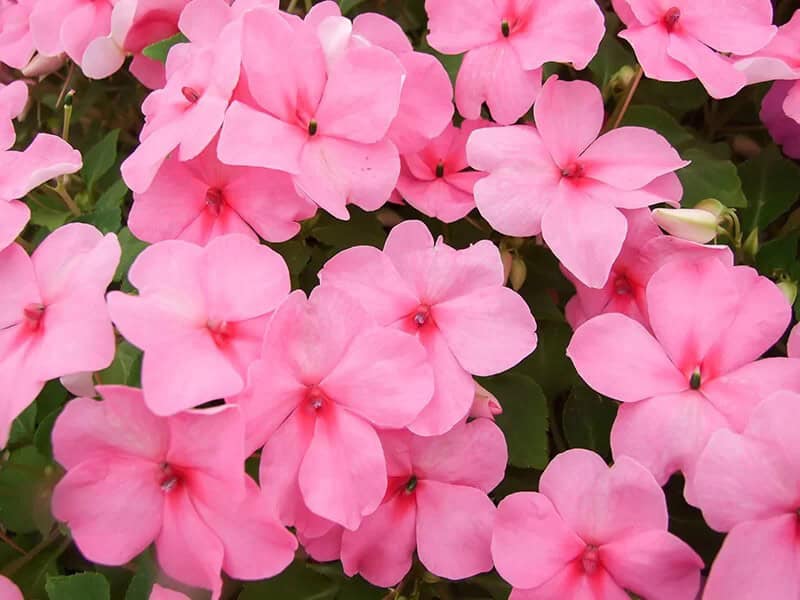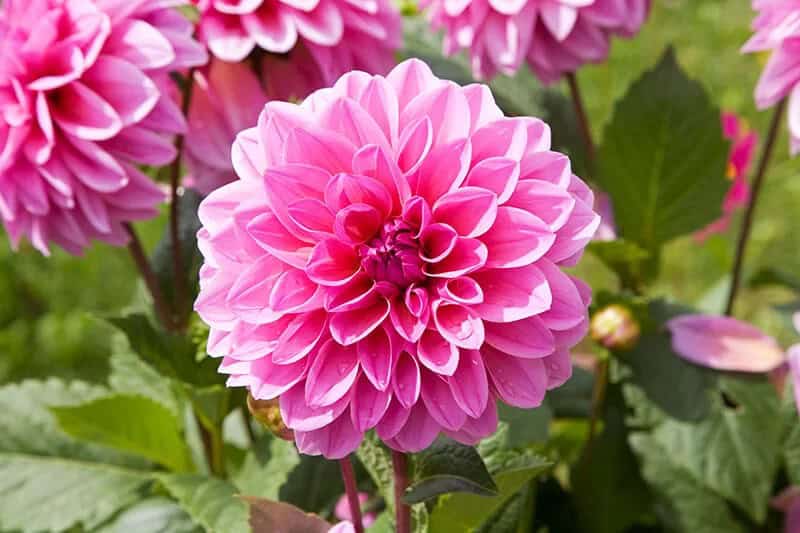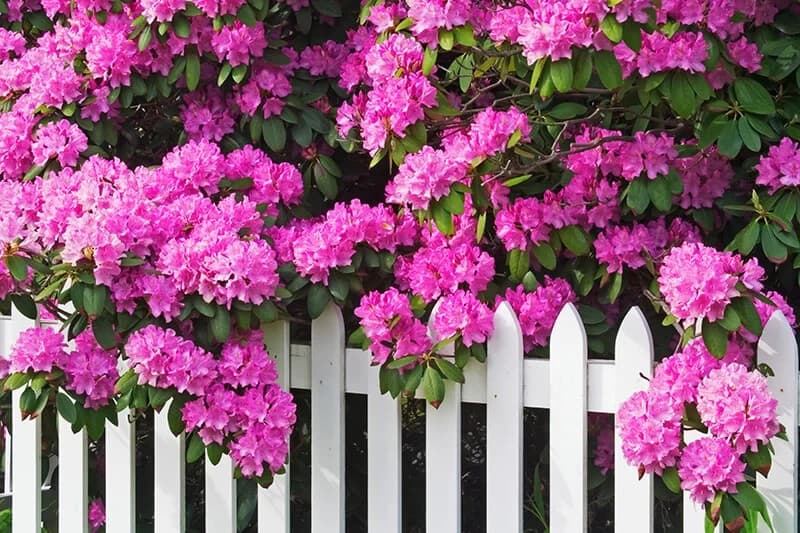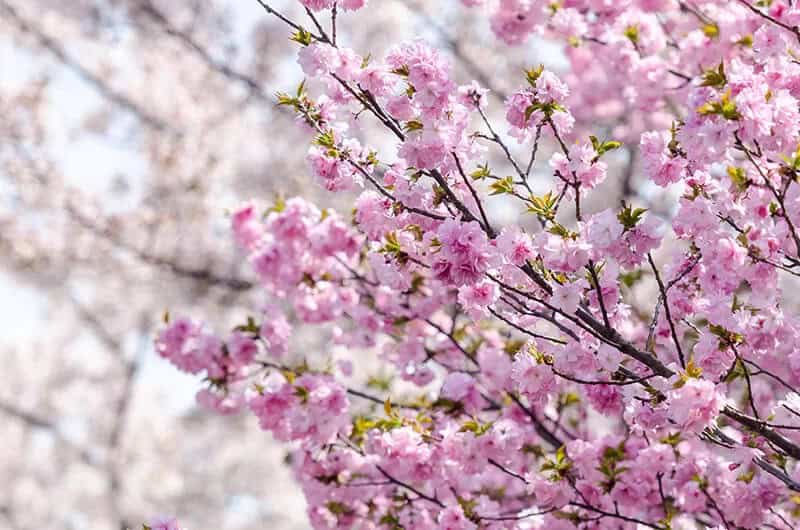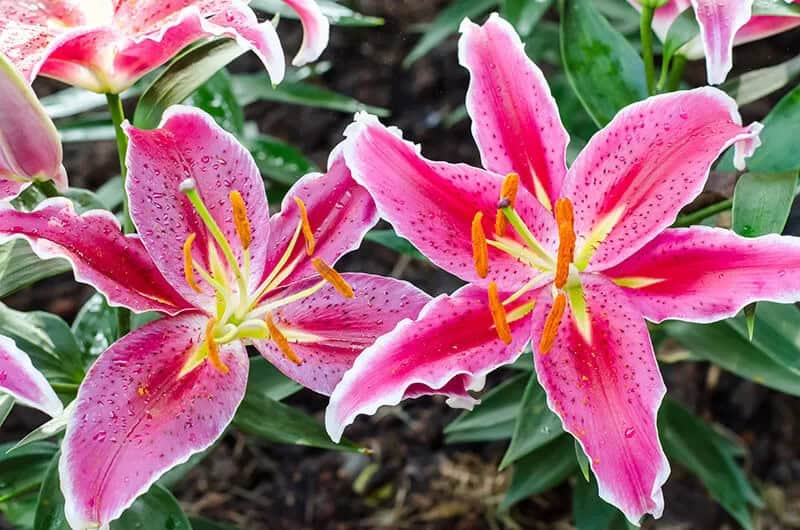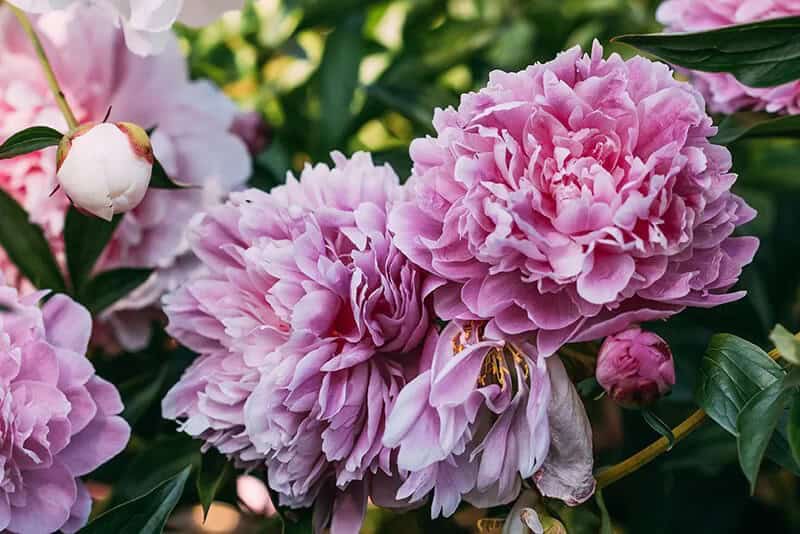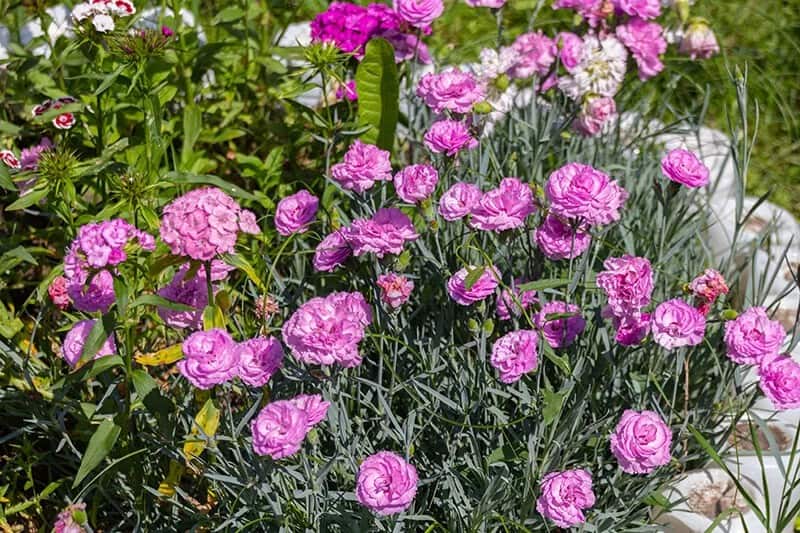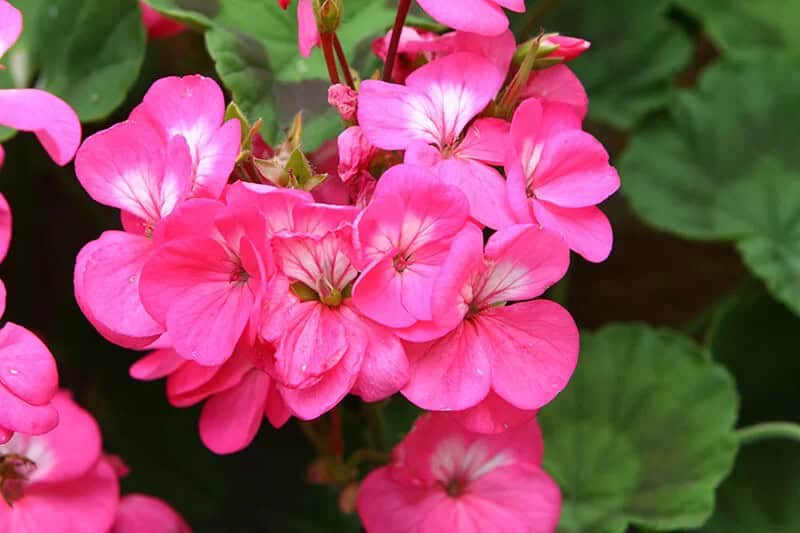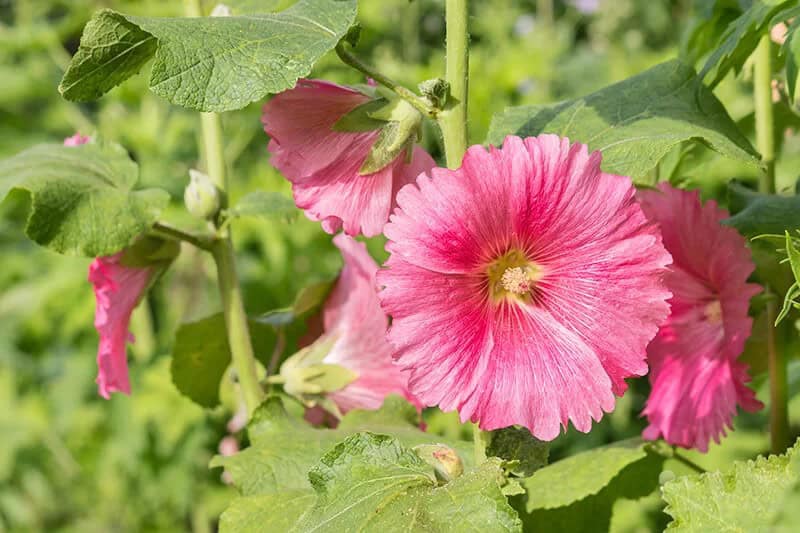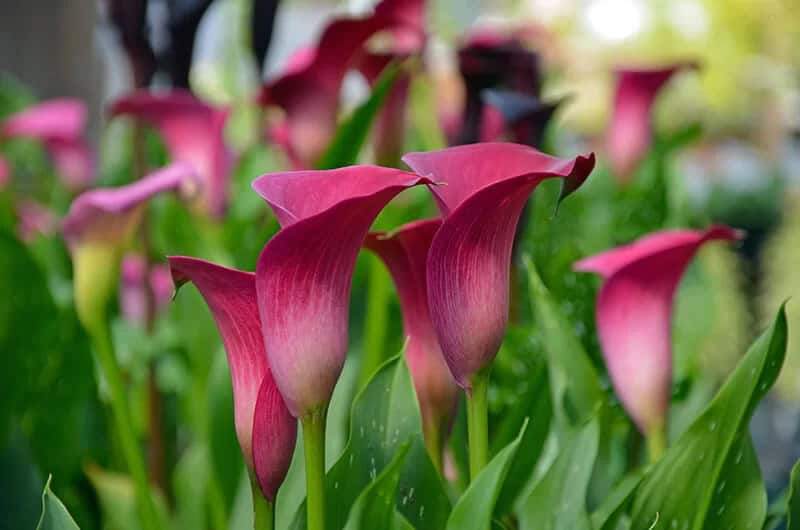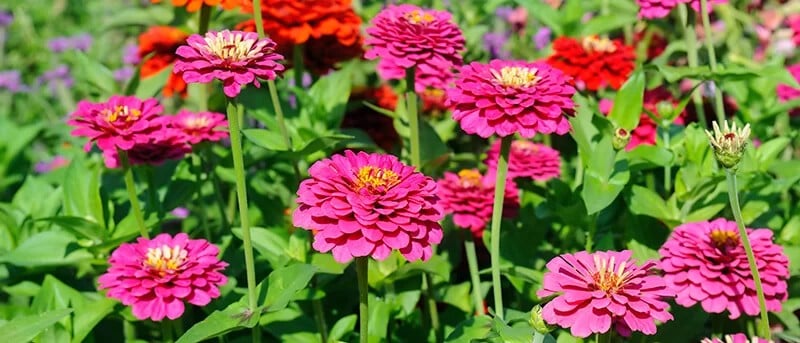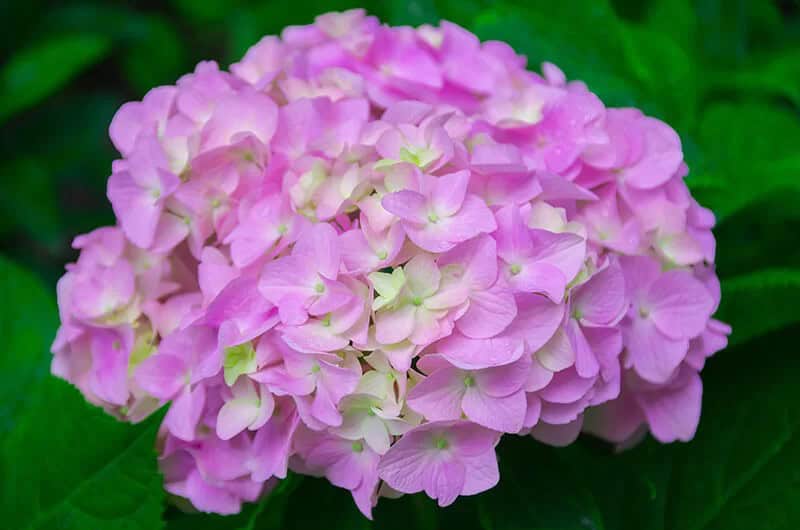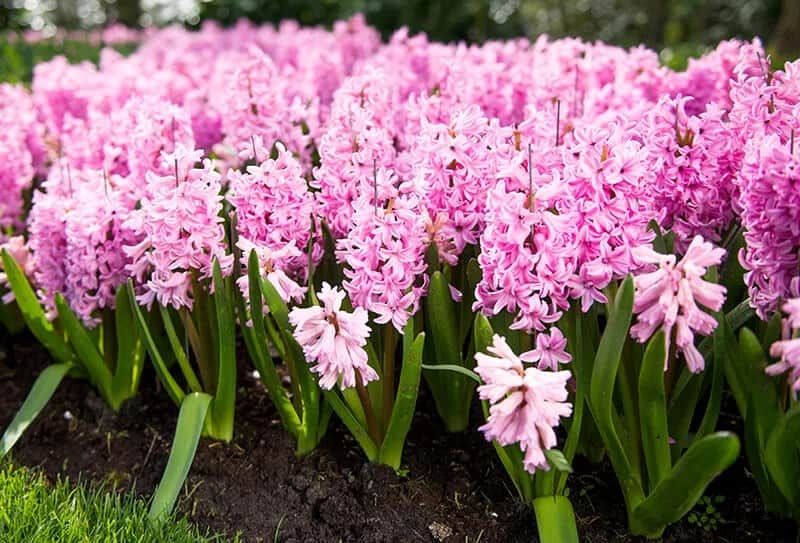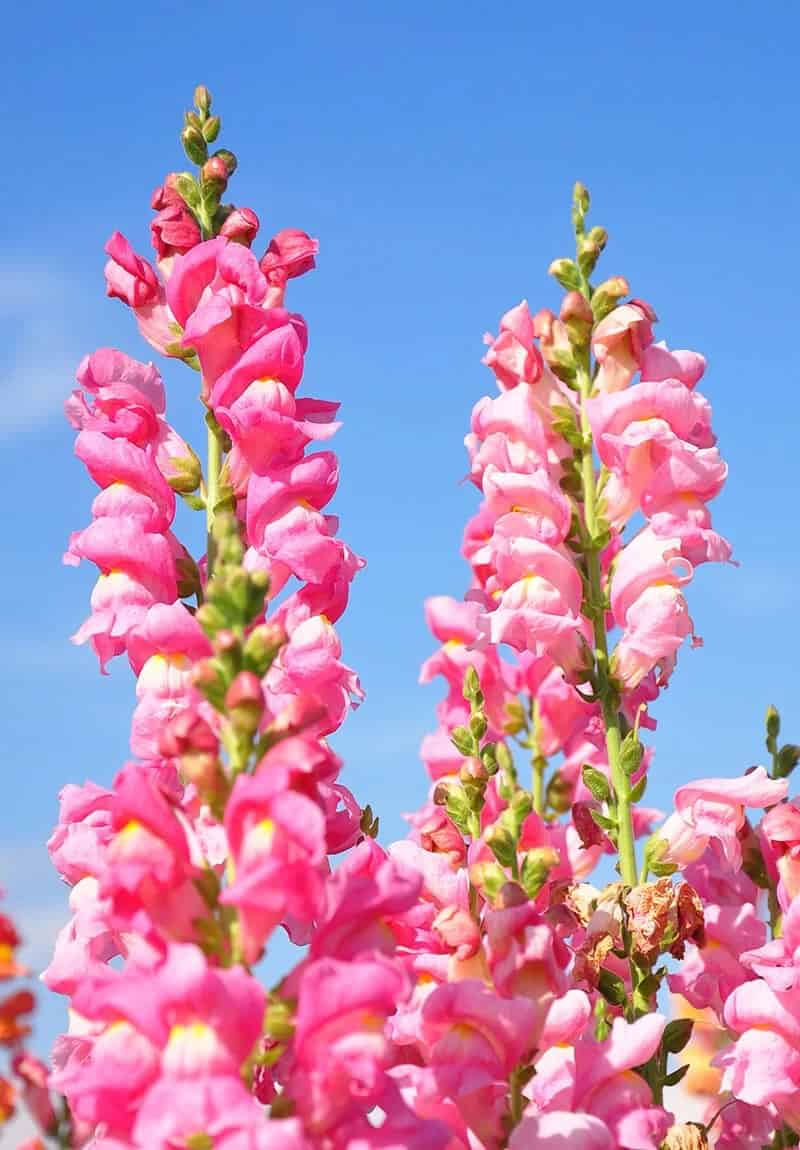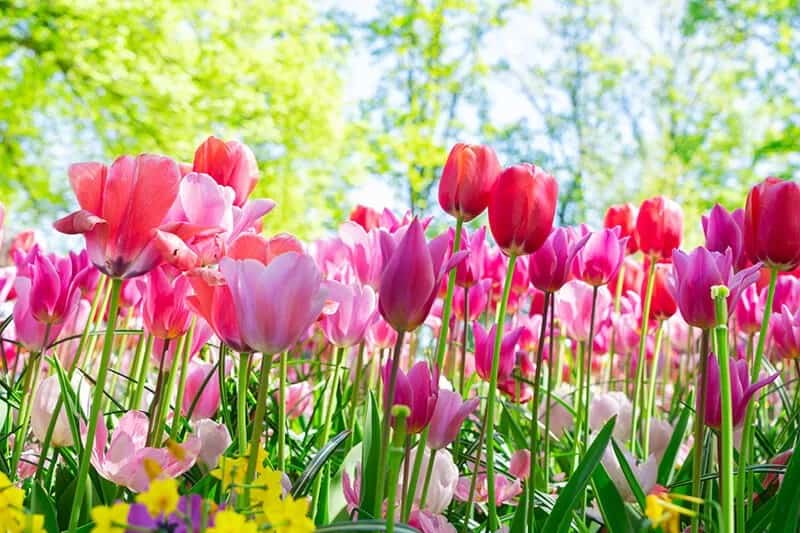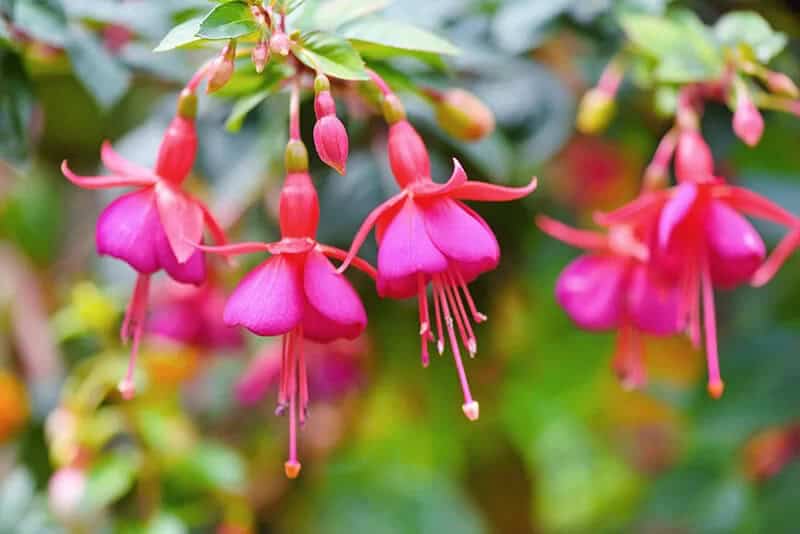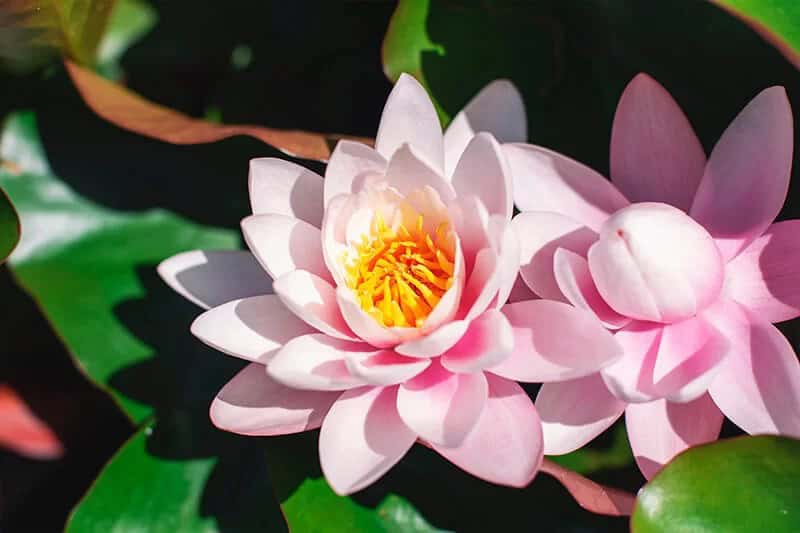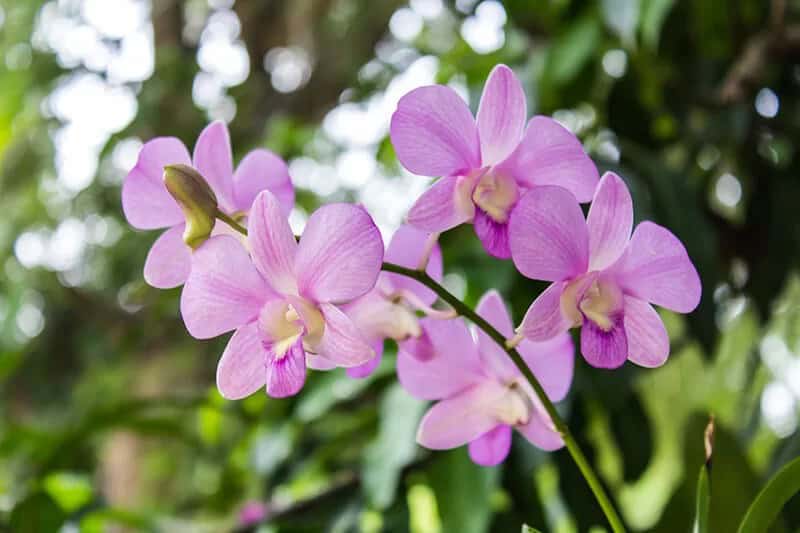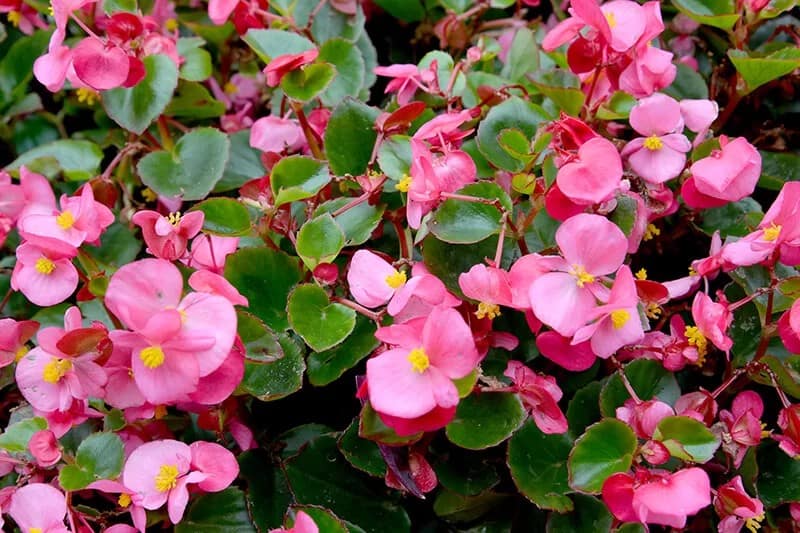As the seasons transition from winter to spring, many garden enthusiasts begin to dream up vibrant and colorful arrangements featuring the iconic hue of pink. Whether you’re tending to acres of rose-filled acres or simply sprucing up your small apartment balcony, springtime gardening offers a sense of renewal and joy. With a few strategically placed flower pots, even the most compact outdoor spaces can be transformed into kaleidoscopic displays of color.
Some may prefer more muted tones, while others delight in the bold statement-making power of pink flowers. Ultimately, it’s up to personal preference whether you opt for a tidy, uniform arrangement or a riotous explosion of color, but one thing is certain: pink blooms bring a touch of springtime magic to any garden.
The 27 Top Delightful Pink Flowers for Your Garden
Before embarking on your spring gardening project, it’s essential to establish a clear plan for what you want to achieve. This may involve exploring the local Arboretum or nursery to gain inspiration from the vast array of plants available and envisioning how they can be arranged to create a visually appealing display. By doing so, you’ll be better equipped to make informed decisions about which flowers to choose and how to incorporate them into your design.
If you’re opting for a pink-themed spring garden, you’re spoiled for choice. From delicate, light-pink blooms that add a touch of subtlety to more vibrant, hot-pink varieties that demand attention, there’s something to suit every style and preference.
Coral Bells (Heuchera)
This stunning North American native, Heuchera, boasts an array of colors and varieties, including vibrant pink hues. The bell-shaped flowers, which bloom in spring and early summer, dangle from long stems that emerge from a woody rootstock. As a nectar-rich plant, it’s a magnet for bees and hummingbirds, making it an excellent choice for gardens catering to these pollinators. The evergreen leaves, with their rounded shape, provide year-round interest.
Heuchera thrives in rock gardens and container gardens when planted in the fall, growing at a moderate pace. Named after Johann Heinrich Heuchera, a German botanist from the early 1800s, the genus Heuchera honors his legacy. The common name ‘coral bells’ stems from the bell-shaped flowers that hang from swaying stems. In Catholic households, coral red flowers were associated with Mary’s virtues and white coral bells with Jesus’ purity.
To thrive, Heuchera requires rich but well-drained soil and full sun to part shade conditions. A summer bloomer, it excels in USDA zones 4-8, where the right balance of acidity is maintained.
Impatiens (Impatiens Walleriana)
In the Northern Hemisphere, impatiens have been a staple in countless gardens. These charming flowers, native to Africa and Eurasia, are renowned for their vibrant hues that span the color spectrum from pure white to soft pink and bold blue. Despite their diminutive size, some varieties barely rising above ground level, they pack a punch with their radiant blooms.
Typically, gardeners plant impatiens around Memorial Day in the United States, with the plants bursting into bloom later in spring or early summer. Interestingly, impatiens are often linked to motherly affection and, in some cultures, associated with the concept of impatience. As the name suggests, these flowers have an innate connection to patience. To thrive, impatiens require rich, well-drained soil with a slightly acidic pH range, making zones 10-11 ideal for growth.
They also excel in partial to full shade and can be effortlessly containerized or hung in baskets. Simply water them once a week, and they’ll flourish in their new environment.
Dahlias (Dahlia)
As summer reaches its peak, the vibrant dahlia flower bursts into bloom, showcasing its striking starburst leaves and kaleidoscope of colors, including a stunning shade of pink. Native to Central and South America, this showstopper can grow up to six feet tall in ideal conditions. In mild climates, dahlias can be treated as perennials, left to thrive year after year, but they require careful storage when temperatures drop below 20 degrees Fahrenheit.
With its rich symbolism, the dahlia represents a range of emotions, from opulence and sophistication to passion and devotion. In ancient Aztec culture, the dahlia played a multifaceted role – not only as a food source, but also as a revered symbol in religious rituals. To coax these beauties into bloom, gardeners should aim for zones 8-10, although careful attention can yield success in zone 7.
The key to growth lies in basking dahlias in plenty of sunlight and cultivating acidic, well-drained soil with loose texture. Once the tubers begin producing green shoots, regular watering – once or twice a week – will keep them thriving.
Azaleas (Rhododendron)
Azaleas are often the first sign of spring’s arrival in the southern United States, with their vibrant pink flowers being the most common sight. However, these stunning shrubs can also produce blooms in white, red, and various shades of pink. The blooming period typically spans from mid-spring to late April, although some azaleas may start flowering as early as March, depending on weather conditions.
While azaleas are often used interchangeably with rhododendrons, the two plants have distinct characteristics – azaleas produce evenly spaced flowers, whereas rhododendrons tend to cluster their blooms. This deciduous shrub thrives in acidic soil and prefers to grow in shady areas with a few hours of morning sunlight, reaching heights of up to twelve feet. Native to Asia, Europe, and North America, azaleas do best in zones 3-9 and can be watered using natural rainfall.
With their symbolism of family, responsibility, wealth, refinement, feminine beauty, and passion, it’s no wonder why azaleas are a beloved and iconic symbol of spring.
Chrysanthemum (Chrysanthemum Morifolium)
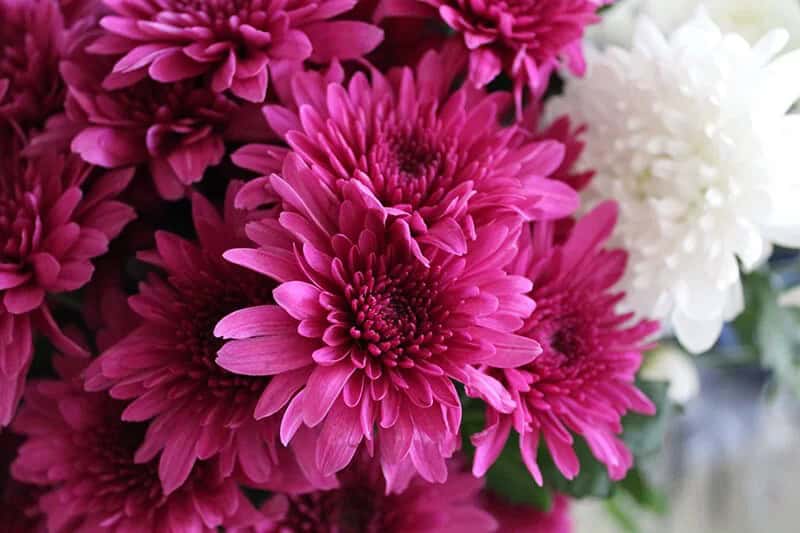
The chrysanthemum, a quintessential autumn bloom, shares a special bond with its spring counterpart, the azalea. Characterized by vibrant, dome-shaped flowers that burst forth in the fall season, this perennial plant can thrive for years when properly cared for. Despite being commonly sold as fall decor, it’s essential to recognize that the chrysanthemum is actually an enduring specimen.
In Asian cultures, these blooms are often bestowed upon loved ones as birthday and baby shower gifts, while in Europe, they serve as a symbol of sympathy. In the realm of symbolism, a red chrysanthemum assumes significant importance, signifying love when presented to someone. Generally, this herbaceous perennial is associated with themes of happiness, love, and longevity.
Reaching heights of up to three feet, it prefers well-draining soil rich in organic matter, moderate moisture levels, and direct sunlight. Suitable for zones 3 through 9, the chrysanthemum blooms in late summer and early fall. To ensure optimal growth, water when the top inch of soil feels dry or the pot/soil appears moist.
Anemone (Anemone spp.)
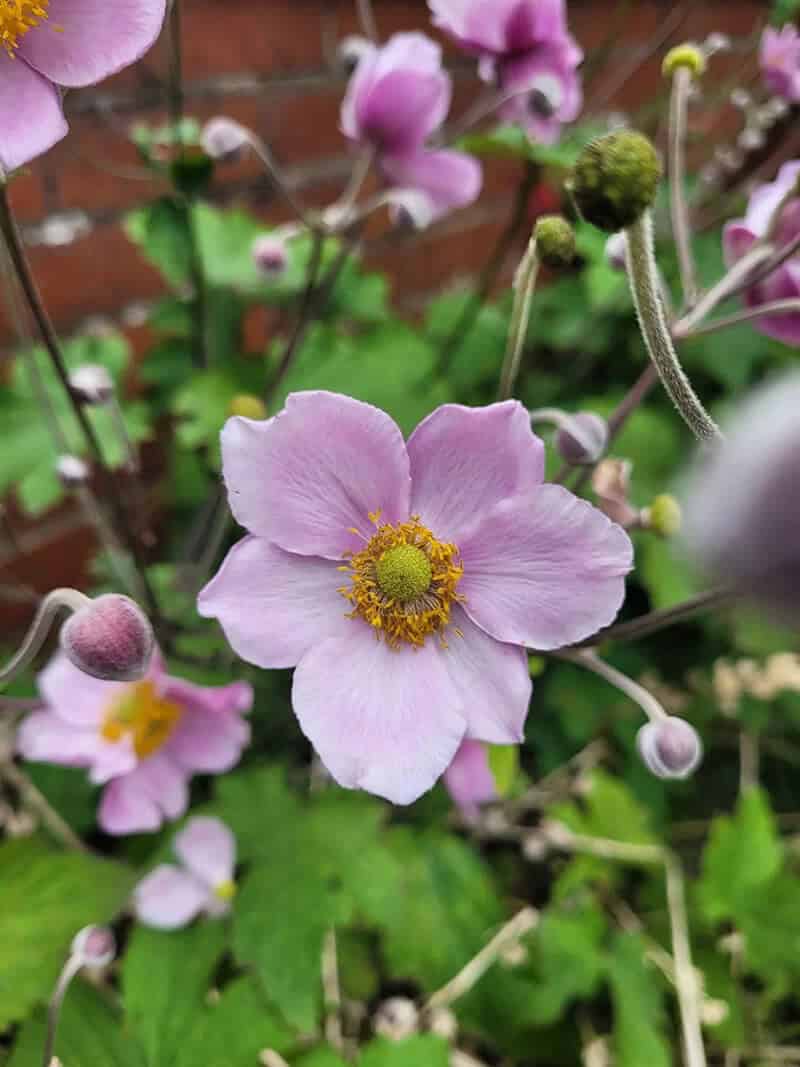
The anemone family encompasses numerous plant species, commonly referred to as windflowers. These plants are characterized by two-inch-wide flowers, with pink being a popular color option although other hues are also available. The symbolism associated with anticipation is perhaps the most significant aspect of anemone flower meaning, according to the Victorian era’s floral lexicon. Additionally, vulnerability is another representation attributed to these flowers.
In Greek and Christian mythology, the red anemone symbolizes death or forsaken love. Anemones produce corms resembling bulbs, which enable their rapid growth. These herbaceous perennials spread outward rather than upward, reaching diameters of up to three feet and heights of approximately half a foot. Preferring full to partial sunlight, they thrive in moisture-rich, acidic or neutral soil conditions.
The blooming period varies depending on the species, ranging from spring to fall, with flowers displaying a wide range of colors. In terms of growing requirements, anemones do best in zones 3 to 10 when not exposed to excessive rainfall. Regular watering is essential; however, it’s crucial to understand the specific water needs of the species you’re working with to ensure optimal growth.
Cherry Blossoms (Prunus Serrulata)
The Japanese cherry tree encompasses a broad spectrum of ornamental flowering trees, with the Kansan and Sekiyama varieties being two of the most prominent types. These compact and small varieties are ideal for landscaping due to their petite stature. In early spring, white or pink flowers bloom under the sun, typically after planting in the fall to allow for root growth before winter sets in.
It is essential to note that this plant contains trace amounts of cyanide, making it mildly toxic to humans and animals alike, hence caution should be exercised when handling any part of the plant.
In Japan, cherry blossoms symbolize spring’s rebirth and serve as a poignant reminder of life’s fleeting nature. The flowering period is strikingly brief, with the tree itself reaching heights of up to 25 feet when full-grown. To thrive, it requires direct sunlight exposure.
Optimal soil conditions include loamy, well-draining terrain with a pH level of 7 or higher. In spring, pinkish blooms emerge as it thrives in zones 5 through 8. Native to Japan, Korea, and China, this tree demands consistent hydration; at the very least, an inch of rainfall per week is necessary.
While it can tolerate short droughts, prolonged dry spells necessitate regular watering. Mulching plays a crucial role in keeping its roots moist, as it relies heavily on water to sustain itself.
Oriental Lily (Lilium ‘Stargazer’)
The Stargazer Lily, also known as Oriental Lily, has undergone significant breeding efforts since the 1970s to combine the most desirable traits from various Asiatic lily varieties. This results in stunning, fragrant blooms that unfurl in a bowl-like shape and can reach a diameter of six inches. The flowers’ intoxicating aroma can be overpowering for some, but their vibrant colors, typically featuring bold red hues with pink being the most popular, make them a standout addition to any garden.
The nectar-rich blooms attract butterflies and hummingbirds, making them an excellent choice for hummingbird gardens. While fall is the most common planting season, Oriental Lilies can also thrive when planted in early spring as soon as the ground thaws. Their symbolic association with the Virgin Mary lends them a deeper significance, representing purity and new life.
As perennials, these bulbous plants can grow up to four feet tall and require full sun, moist well-drained soil, and a slightly acidic pH to flourish. Summer is their prime blooming season, and they excel in zones 4 through 9. To ensure optimal growth, water only when the soil feels dry, as standing water can lead to bulb rot.
Camellia (Camellia spp.)
For over a millennium, humans have been cultivating the camellia, a flowering shrub that originated in Japan and China but now thrives in the southern United States. Despite being part of the same plant family as tea, camellias bear a striking resemblance to peonies. Their adaptability is reflected in their ability to be planted at any time of year except for the peak summer months, when intense heat can be detrimental.
The flowers themselves come in a kaleidoscope of colors, with pink being the most prevalent hue, but what’s truly remarkable is that camellias are evergreen and produce blooms in shades of white, pink, and red throughout the year. The credit for introducing this stunning plant to Europe goes to Brother Josef Kamel, a Jesuit priest from the Philippines, who successfully cultivated it centuries ago.
Camellia flowers have become a popular metaphor for feelings of love, adoration, and admiration, reflecting their beauty and symbolic significance. In terms of growing conditions, camellias prefer partial shade and can reach an impressive height of twelve feet. The ideal soil pH range for these plants is between 5.5 and 6.5, while blooming typically occurs from late fall to early spring in zones 7 through 9, with a high degree of success.
Foxglove (Digitalis Purpurea)
The vibrant purple blooms of Digitalis purpurea, a species of foxglove, are a common sight in many gardens. This biennial plant is known for its striking tubular flowers that can grow up to five feet tall in their second year of growth. However, in the first year, it produces only a few leaves and reaches a more modest height of two feet. The entire plant contains toxic compounds that affect the heart, making it essential to handle with care.
Beyond their toxicity, foxgloves have been imbued with symbolic meanings, often tied to insincerity, pride, energy, magic, ambition, intuition, and creativity. To thrive, these plants require full to partial sunlight and loamy soil with good drainage. A slightly acidic pH and moderate summer temperatures also contribute to optimal growth. Native to Europe and Africa, Digitalis purpurea can be found in climates ranging from zones 4 to 10.
To prevent root rot, ensure that the top two inches of soil remain dry, only watering when necessary.
Peony (Paeonia Officinalis)
Peonies are often referred to as the springtime harbingers of the United States, with their delicate tubular roots and medium-sized herbaceous perennial nature making them a popular choice for gardeners. There are approximately thirty-three different species of peony, all characterized by intricately detailed pink flowers that bear a resemblance to roses.
For centuries, the peony has been a symbol of goodwill and happiness, often given as a gift on special occasions such as weddings, birthdays, and anniversaries.
Despite being typically planted in the fall, peonies begin blooming from late spring through summer, with their six-week bloom period ending just before the first freeze. To thrive, peonies require direct sunlight and well-draining soil, making them suitable for climates ranging from zones 3 to 9.
It’s worth noting that some species of peony can be mildly toxic to pets and humans, so it’s essential to exercise caution when handling or consuming the plant. Originating from Asia, Europe, and North America, depending on the species, peonies have become a beloved addition to many gardens across the United States.
Carnation (Dianthus Caryophyllus)
Carnations, a perennial favorite for bouquets and corsages, are widely available in flower shops globally. The versatility of these flowers is evident in their ability to be dyed various colors for special occasions, such as holidays, with white carnations being commonly transformed into shades like pink, coral, and red. Despite being cultivated for over 2,000 years, the origins of carnations remain unclear, leaving even ancient writings without a definitive answer.
It’s speculated that they originated in Italy, Spain, or Greece. As symbols of love and devotion, carnations make a thoughtful gift for various occasions, including Mother’s Day, birthdays, anniversaries, and funerary arrangements, representing loss or mourning. These flowers can grow up to 18 inches tall and thrive in both full sun and partial shade, provided the soil is alkaline and well-drained.
In late spring, carnations typically bloom fully, but they may also rebloom during the summer months. To ensure optimal results, regular watering is essential when buds are forming; however, overwatering can cause leaves to turn yellow. It’s recommended to water at the base of the plant, as excessive moisture can be detrimental.
Geranium (Geranium spp.)
Geraniums are a diverse and adaptable species that have been cultivated for centuries, resulting in a vast array of hybrids and varieties. One of the most striking features of these plants is their ability to produce dense, vibrant flower stalks that spread among other plants, showcasing an impressive range of colors from white to magenta to blue.
While true geranium species are less common than their hybrid counterparts, they still attract butterflies and have become a staple in various landscaping designs.
In folklore, geraniums are often seen as symbols of joy, companionship, and good health, making them a popular choice for housewarming gifts. This showy perennial can grow up to two feet tall, with some varieties preferring well-drained, slightly acidic soil.
The amount of sunlight it receives also plays a significant role in its growth, with some varieties thriving in partial shade while others require full sun.
Geraniums are known for their ability to bloom from spring through fall, making them a great addition to any garden or landscaping design. They can be found all over the world, but they are most commonly found in the Mediterranean region.
Interestingly, these plants are surprisingly low-maintenance and only require watering when the soil has dried out, even when exposed to full sun.
Hollyhock (Alcea spp.)
Hollyhocks have been a staple in cottage gardens for centuries, boasting an impressive array of over sixty varieties. These striking plants produce deep magenta and pink blooms that can reach heights of up to eight feet, although four feet is more typical. As they burst into bloom once or twice a year, they attract pollinators like bees, making them an excellent addition to butterfly gardens. Hollyhocks also hold significant symbolic meaning.
Planting them at the entrance of one’s home is believed to bring good fortune, while in ancient Egyptian culture, hollyhock wreaths were often placed on the mummified to facilitate their journey into the afterlife. The plants’ adaptability allows them to thrive in a range of conditions, from full sun to partial shade, depending on soil acidity or alkalinity.
To ensure healthy growth, it’s essential to keep the top five inches of soil consistently moist but not waterlogged, which can lead to root rot. Hollyhocks are hardy in zones 2 through 10 and produce their most vibrant flowers during the summer months. Originating from both Europe and Asia, these charming plants have been delighting gardeners for generations.
Calla Lily (Zantedeschia Aethiopica)
Calla lilies are renowned for their elegance and charm, frequently gracing bouquets and classical gardens with their presence. While white and pink are the most prevalent hues, these flowers can actually bloom in a range of colors, including striking shades of black and orange. Their ability to remain fresh-cut for an extended period has made them a popular choice for wedding bouquets.
Native to Africa, calla lilies are typically planted in the springtime, thriving in gardens and homes across the country. As midsummer gives way to early fall, these flowers come into bloom, but it’s essential to note that they are toxic to both humans and animals. In Easter services, white calla lilies have taken on a symbolic significance, representing the resurrection and rebirth of Jesus Christ.
White calla lilies, like their yellow counterparts, also convey innocence and gratitude, while pink calla lilies signify admiration and respect. The purple variety, meanwhile, is a symbol of passion. Calla lilies are relatively easy to cultivate, requiring full sun or partial shade to reach heights of up to three feet. The rhizome of this plant demands well-draining soil that’s kept moist but not waterlogged, with an acidic pH ideal for optimal growth.
When grown in zones 8 through 10, these plants can tolerate some neglect, only needing a weekly watering if they’re not kept in dry conditions.
Zinnia (Zinnia Elegans)
Zinnias, native to South America and Mexico, have become a global phenomenon with their vibrant pink hues and easy-care requirements. Their remarkable growth rate, annual blooming, and diverse color palette make them a favorite among gardeners. Breeders continually work on refining the species by introducing new hybrids, which has resulted in greater adaptability to challenging conditions.
The flowers share a striking resemblance to daisies, with each bloom capable of reaching up to four feet tall when grown as annual shrubs. Zinnias thrive in hot weather and should be planted in spring, although they don’t truly start growing until the temperature warms up. When it comes to symbolism, zinnias are often associated with friendship and resilience, with a historical significance during the Victorian era as a token of longing for a lost friend.
To grow these plants successfully, provide them with full sun and plant in neutral, well-draining soil that can tolerate occasional watering. Avoid keeping the roots constantly damp, as this can be detrimental to their health.
Hydrangea (Hydrangea Arborescens)
The majestic Pink Flower Plant is a staple in many cottage gardens, despite being part of a genus with only a few species used for gardening purposes. What sets it apart from other flowering plants is its prolific blooming habit and rapid growth rate. While it can reach heights of up to ten feet, most specimens typically top out at around three feet. This deciduous shrub exudes gratitude, grace, and awe-inspiring beauty, making it a symbol of these qualities.
Its abundant blooms and rounded shape also radiate abundance, love, harmony, and peace through its vibrant hues. The Pink Flower Plant is native to the eastern United States, where it thrives in well-drained, alkaline or neutral soil during the summer months. However, it does have some flexibility when it comes to soil pH, tolerating mildly acidic conditions.
To succeed in arid regions, this plant requires consistent moisture but must be prevented from becoming waterlogged, making irrigation a necessary consideration.
Hibiscus (Hibiscus)

The hibiscus plant, with its vibrant pink flowers, is a tropical delight that has captured the hearts of many. Native to North America, this resilient flower boasts a range of pink hues, from soft pastels to bold statements. The blooms themselves are nothing short of stunning, reaching sizes reminiscent of Frisbees and lasting only two days before being replaced by new ones.
This clever blooming strategy allows for a constant display of color, attracting bees, butterflies, hummingbirds, and even dragonflies. While some may view the yellow hibiscus as a symbol of happiness, sunshine, and good fortune, its red counterpart takes on a more romantic tone, representing passion, love, and friendship. When grown in full sun, these flowers can reach heights of up to seven feet, though most varieties top out at three feet or less.
To thrive, they require well-draining potting soil with a slightly acidic to neutral pH. As a Zone 5-9 plant, it’s essential to provide consistent moisture – around two inches per week – without overwatering, especially in hot and dry climates where daily watering may be necessary.
Spider Lily (Lycoris)
The striking spider lily boasts delicate petals at the end of slender stems that evoke fireworks, reaching heights of up to ten inches. As the seasons change, its blooms transition from white to vibrant shades of red and pink in late summer. Interestingly, some varieties of this amaryllis-type flower can enter a state of dormancy during the summer, only to re-emerge with new blooms in the fall or winter, depending on the climate where they reside.
With their ease of growth and annual rebirth, spider lilies have become a beloved addition to many gardens. Native to Asia, these flowers are widespread across the continent, often found in areas where people part ways for the final time. According to legend, red spider lilies hold special significance in ancient Buddhist texts, symbolizing the cycle of rebirth. To thrive, spider lilies require either full or partial sun and well-draining alkaline soil.
Originally hailing from China and Japan, these flowers flourish in USDA zones 6 through 9, where they are nourished by moist yet not waterlogged conditions. It is essential to avoid over-watering, as this can lead to bulb rot, a common issue for spider lilies.
Hyacinth (Hyacinthus Orientalis)
The iconic hyacinth, with its potent fragrance, evokes feelings of renewal and vitality in many who encounter it. This tubular flower, available in a range of colors from pure white to vibrant blue and pink, emerges from sturdy spikes that form the petals. Originally hailing from Asia, the Dutch brought the plant to Europe in the 1700s, where it has since thrived in over sixty distinct varieties.
As low-maintenance perennial bulbs, hyacinths can be grown in pots or directly in the ground, typically requiring cultivation in the fall and blooming in the spring. However, due caution is necessary when handling these toxic bulbs, which pose a risk to both animals and humans. Beyond their beauty, hyacinths hold symbolic significance as the flower of Apollo, representing peace, commitment, and power. In Christian churches, they often adorn the space, signifying joy and love.
Reaching a modest height of one foot, hyacinths can flourish in partial shade or direct sunlight, preferring well-drained and moist soil with a neutral pH level. As a general rule, they perform best in zones 4 through 8, requiring thorough watering after planting and allowing the soil to dry out before spring’s bloom. Watering twice weekly during blooming periods, dependent on rainfall, ensures optimal growth.
Snapdragon (Antirrhinum majus)
Snapdragons are a popular perennial that may not last forever, but they make up for their brief lifespan with their vibrant blooms and versatility. Whether used as a border or adding color to container gardens, these plants are sure to impress. But what’s behind their name? The flower’s unique shape is said to resemble a dragon’s head, giving rise to the plant’s moniker.
Native to Syria, Turkey, and the Mediterranean region, snapdragons can grow quite tall – up to four feet – although one foot is more typical. They thrive in the cooler months of spring and fall, with an official blooming period that spans from spring to autumn. But did you know that according to folklore, snapdragons are also thought to be both deceitful and gracious? In terms of growing conditions, these plants are quite adaptable.
They can tolerate full sun or partial shade as long as the soil is moist and well-drained. If you’re looking to grow snapdragons in your garden, zones 7 through 11 are suitable, provided the soil has a slightly acidic to neutral pH. Once established, the plant requires about an inch of water per week.
Tulip (Tulipa)
Tulips are a ubiquitous flower that transcends floral knowledge, recognizable even to those unfamiliar with the world of blooms. The cup-shaped blooms, available in nearly every color of the rainbow, adorn the perennial bulb’s stalks. With thousands of varieties within the genus, tulip cultivation dates back to ancient times, offering an array of choices for gardeners. To ensure optimal results, many gardeners opt for a diverse selection of tulips that bloom at different times.
For those in warmer climates, pre-chilled bulbs are necessary as the bulbs require chilling during the winter months. As the plant emerges from the ground between April and May, flowering commences. Tulips are often synonymous with deep and enduring love, reaching heights of up to two feet and requiring direct sunlight for optimal growth. A garden’s ideal soil conditions comprise rich, well-drained, and largely neutral terrain.
Upon planting in zones 3 through 8, water the bulbs thoroughly for best results. Subsequent watering should be minimal, allowing natural rain cycles to provide the necessary moisture. During periods of drought, maintain a regular schedule of every two weeks.
Fuchsia (Fuchsia)
Fuchsias are certainly eye-catching flowers that demand a second glance. This annual shrub produces teardrop-shaped blooms in a range of vibrant hues, with red and pink being the most common colors. When grown in hanging baskets, their bell-shaped buds create a stunning chandelier-like effect. However, it’s essential to note that fuchsias are highly sensitive to cold temperatures, so it’s crucial not to plant them in areas where nighttime temperatures drop below 50 degrees Fahrenheit.
In terms of symbolism, the meaning of fuchsias can vary depending on the culture, ranging from representing a loving and trusting relationship to serving as a warning. Ideally, this plant thrives in partial shade to full sun, reaching up to two feet in height. To ensure its health, maintain soil moisture by keeping it consistently moist but not waterlogged. The optimal acidity range is from acidic to neutral.
Late spring, summer, and early fall are the prime seasons for enjoying these flowers’ bold red and pink blooms. Native to the Caribbean, fuchsias typically thrive in zones 10 and 11, making them well-suited for warm climates.
Petunia (Petunia spp.)
The petunia is a beloved choice among gardeners who cultivate both border and container gardens. Its vibrant blooms are a sight to behold, with an array of colors that seem to dance in the sun. Native to South America, this annual plant has spread its charm across the globe. Its seeds sprout quickly, and it’s best planted after the last frost. By the start of summer, petunias typically reach their full height of up to two feet tall.
As a symbol of soothing nature, they’re said to calm anger and resentment. A spot with full sun and well-drained acidic soil suits them just fine. Primarily blooming in spring and summer, petunias thrive in zones 10 and 11. To keep them happy, water frequently to maintain moist soil – but be mindful of sogginess, as this can be detrimental. Aim for about 1-2 inches of water weekly, and avoid letting the soil dry out more than two inches deep.
Lotus (Nelumbo)
In the realm of springtime gardening, water gardening stands out as a unique pursuit that revolves around the majestic lotus flower. This enchanting plant has captivated cultures and religions worldwide with its ethereal beauty and symbolic significance. Lotus flowers come in a range of colors, primarily white and pink, and emit a sweet fragrance between June and October.
They thrive in conditions with ample sunlight and warmth, but require a more substantial environment than containers, making ponds or pools the ideal setting. Despite some attempts to grow them in containers, lotus plants typically reach six inches tall and four feet wide as herbaceous perennials. For optimal growth, they demand full sun, neutral soil or water conditions, and prefer hardiness zones 4-10.
Native to Asia and Australia, these aquatic plants can be successfully cultivated in baskets designed for water plants, provided they remain consistently moist. In fact, growing lotus in ponds eliminates the need for frequent watering, making it a low-maintenance yet striking addition to any water garden.
Orchid (Orchidaceae)
Orchids are a paradox – they’re notoriously finicky yet remain a beloved houseplant staple. Their unique charm lies in their delicate, three-petaled flowers that bloom on arching stems, drawing in bees when kept outdoors. Some varieties grow faster than others, making them a thrilling addition to any space. Associated with thoughtful gestures, fertility, beauty, and romance, orchids have a special allure.
As a perennial herb, they can reach up to 18 inches tall, thriving in bright but indirect light. When planting, choose a slightly acidic bark mix or sphagnum moss that’s well-suited for their tropical origins – they hail from the United States and Thailand. Not surprisingly, given their indoor popularity, orchids lack an established hardiness zone, despite being native to warmer climates. Watering is a breeze, as their roots are adapted to sipping moisture from their surroundings.
To keep them happy, alternate between dry periods and watering sessions – weekly waterings will do the trick.
Begonia (Begonia Semperflorens)
The Begonia plant, originating from South America, is a popular choice for potted gardens. Its unique characteristics make it suitable as an annual in colder climates and a perennial in warmer regions. The plant’s waxy and glossy leaves come in a range of colors, including green, maroon, and even bi-colored varieties. The flowers typically bloom in white, red, or pink hues. With minimal maintenance requirements, the Begonia only needs occasional pruning to thrive.
Interestingly, this plant has been associated with both cautionary and celebratory connotations – serving as a warning sign for future misfortunes while also symbolizing respect and gratitude. Reaching heights of up to 18 inches, the Begonia prefers partial shade or full sun, excelling in rich, well-draining soil with a neutral pH. Its summer blooms are particularly vibrant, making it an ideal choice for zones 10 through 11.
To keep this plant happy, regular watering is essential, although care must be taken to avoid over-watering, which can lead to root rot. By striking the right balance, gardeners can enjoy the Begonia’s beauty and charm.
27 Pretty Pink Flower Ideas that will Make Your Garden Bloom
As spring approaches, incorporating a pink flower plant into your garden design provides a delightful way to introduce a touch of whimsy and romance. While pink-flowered plants are relatively low-maintenance, thoughtful planning is essential to ensure each plant’s unique needs are met. This includes considering factors like shade requirements and sunlight exposure, taking into account the overall layout of your garden.
The transition from winter’s chill to spring’s vibrancy signals a season of rebirth and joy, making a stunning display of pink flowers an ideal way to welcome this renewal.

